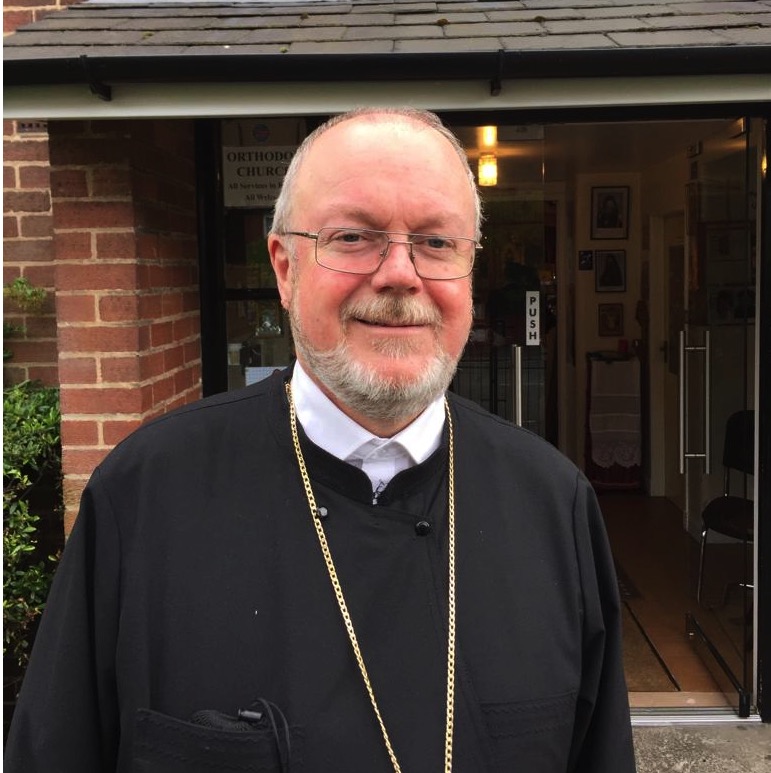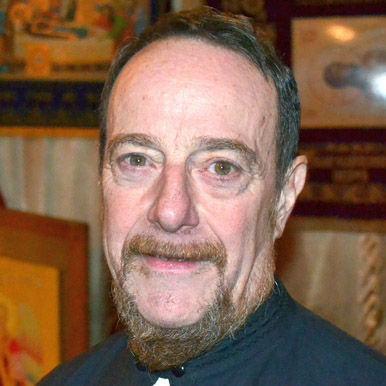Today on this third Sunday in Lent, we venerate the cross of Christ—that is, we show profound respect and awe for what Jesus Christ achieved in the Crucifixion, as well as how the Crucifixion led to the Resurrection. I thought it would be good to consider how that great saint and poet of the fourth century, St Ephrem the Syrian, looked upon the cross. Hymn 25 of his Hymns on Virginity and the Symbols of the Lord, contains the refrain, “Glory to the Omnipotent One,” in other words “Glory to the Almighty Jesus Christ.” In this hymn St Ephrem sang of what happened at the cross between three people—Jesus Christ and His Mother Holy Mary and the Blessed Disciple St John.
The Gospel of St John, chapter 19, verses 26 to 28 describes the scene at the cross: “When Jesus then saw His mother and the disciple whom He loved standing near-by, He said to His mother, ‘Woman, behold, your son!’ Then He said to the disciple [John] ‘Behold, your mother!’ From that hour the disciple took her into his own household. After this, Jesus [knew] that all things had already been accomplished to fulfil the Scripture.” In a sense then, Jesus was making sure that both His Mother, The Theotokos, and St John would be able to accept His death and be prepared for His Resurrection—His future giving of Himself to each of them and to all of us.
St Ephrem addresses his poem to the Mother of Christ and writes: “He left you yet did not leave you, since in His disciple He returned and came to dwell with you,” wrote St Ephrem. “Gracious is He, who undertook sending Himself to those far away although He was [here on the cross]. His will [that is, the will of Christ] descends to everyone; He sends His love to every region. Although He is hidden from all, to everyone who seeks Him He is entirely present” [end of quote]. Those words about Jesus Christ, written by St Ephrem in the fourth century are true for all centuries and all people, including each of us: “He is hidden from all, [yet] to everyone who seeks Him He is entirely present.” To find Christ, we have to seek Him; we have to ask Him to come into our lives, whatever our situation or culture or age.
St Ephrem explains, “The two of them,” that is, the Mother of Christ and the disciple St John, and I quote, “were amazed at one another [and] how much they were able to grow by grace. You, Lord,” wrote St Ephrem “they saw in … one another: Your mother saw You in Your disciple; and he [that is, St John] saw You in Your mother.” In other words, as a note to this hymn says, “Those who see Christ are like mirrors, reflecting His image to others.” As St Ephrem phrases it, “we, too, in one another may see You, our Saviour.” In other words, each of us are drawn into this triangle of relationships among Jesus Christ, and His Mother, The Theotokos, and St John, as we live out our lives and “see Christ [and become] like mirrors reflecting His image to others.” Just like the Theotokos and the disciple St John we can ourselves “be amazed how much we are “able to grow by grace.”
This growth in grace is, I think, made possible, because as St Ephrem wrote in his Sermon on Our Lord, and I quote:
Glory to you, Lord Jesus Christ! You built Your cross as a bridge over death, so that departed souls might pass from the realm of death to the realm of life. Glory to You! You put on the body of a mortal man and made it the source of life for all mortal human beings. You are alive! … Your life [has been] sowed like grain deep in the earth, for it to spring up and raise with itself a multitude of men [and women]. We offer You the great, universal sacrifice of our love, and pour out before You our richest hymns and prayers. For You offered Your cross to God [the Father] as a sacrifice in order to make us all rich.”
Now none of us are going to write poetry as beautiful as that of St Ephrem, or preach as well as he did. However, his basic vision is a possibility for each of us. The cross of Christ that we venerate today is indeed “a bridge over death” that enables us to “pass from the realm of death to the realm of life.” The seeds of the crucifixion of Christ on the cross have been scattered, have been sowed deep within us to empower us to grow in grace. God first loved us as demonstrated through the crucifixion of Christ on the cross and His resurrection. The crucifixion and the resurrection are a unity that enable us to respond to God’s love for us with our love for Him.
And so we ascribe as is justly due all might, majesty, dominion, power and praise to God, Father, Son and Holy Spirit, always now and ever and unto the ages of ages. Amen Father Emmanuel Kahn

 Archpriest Gregory Hallam
Archpriest Gregory Hallam
 Fr. Emmanuel Kahn
Fr. Emmanuel Kahn